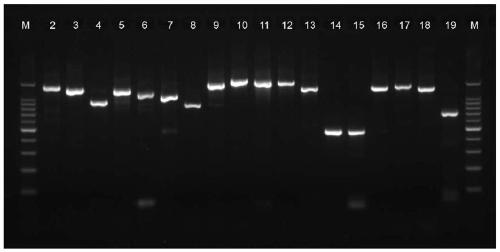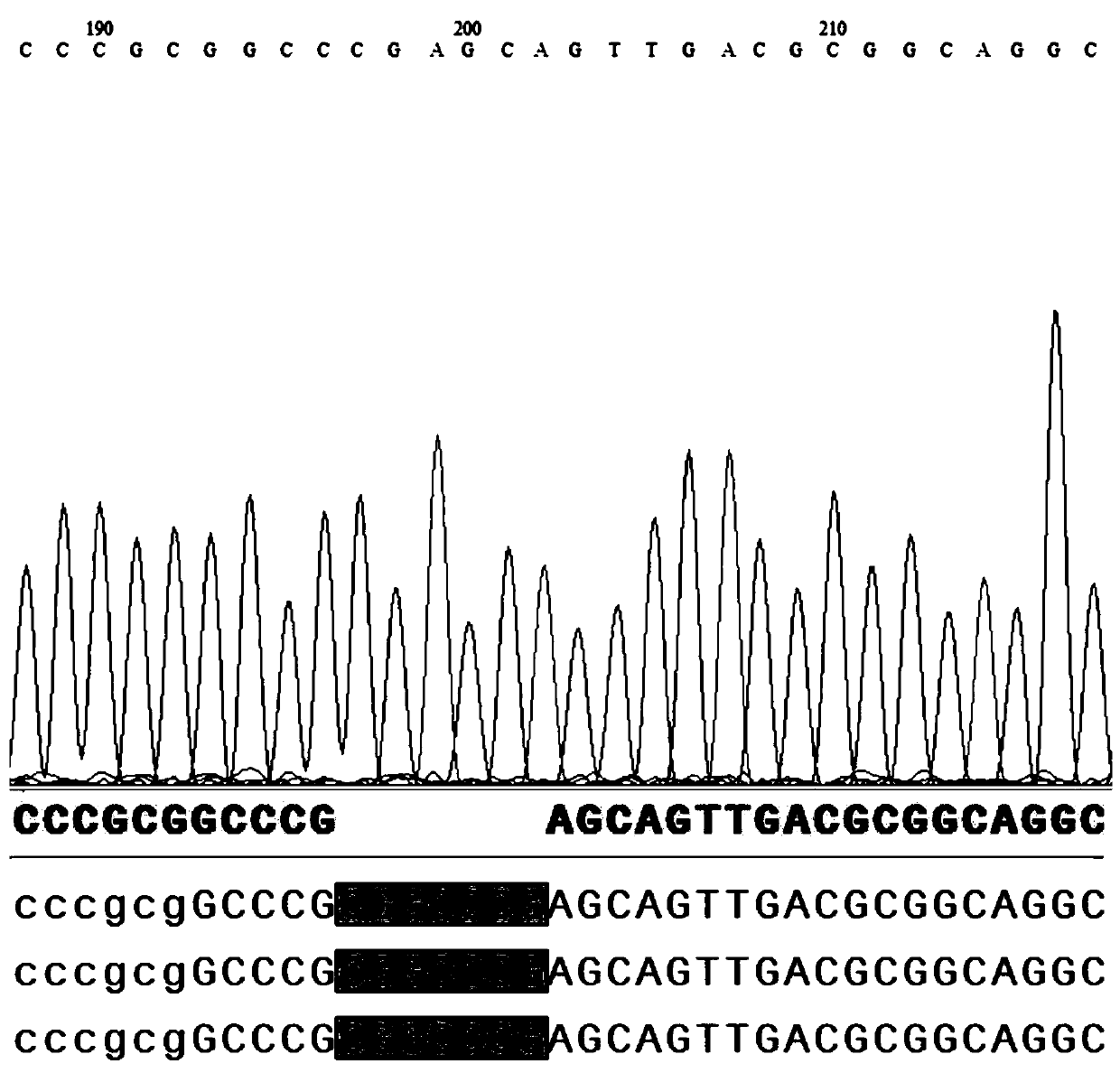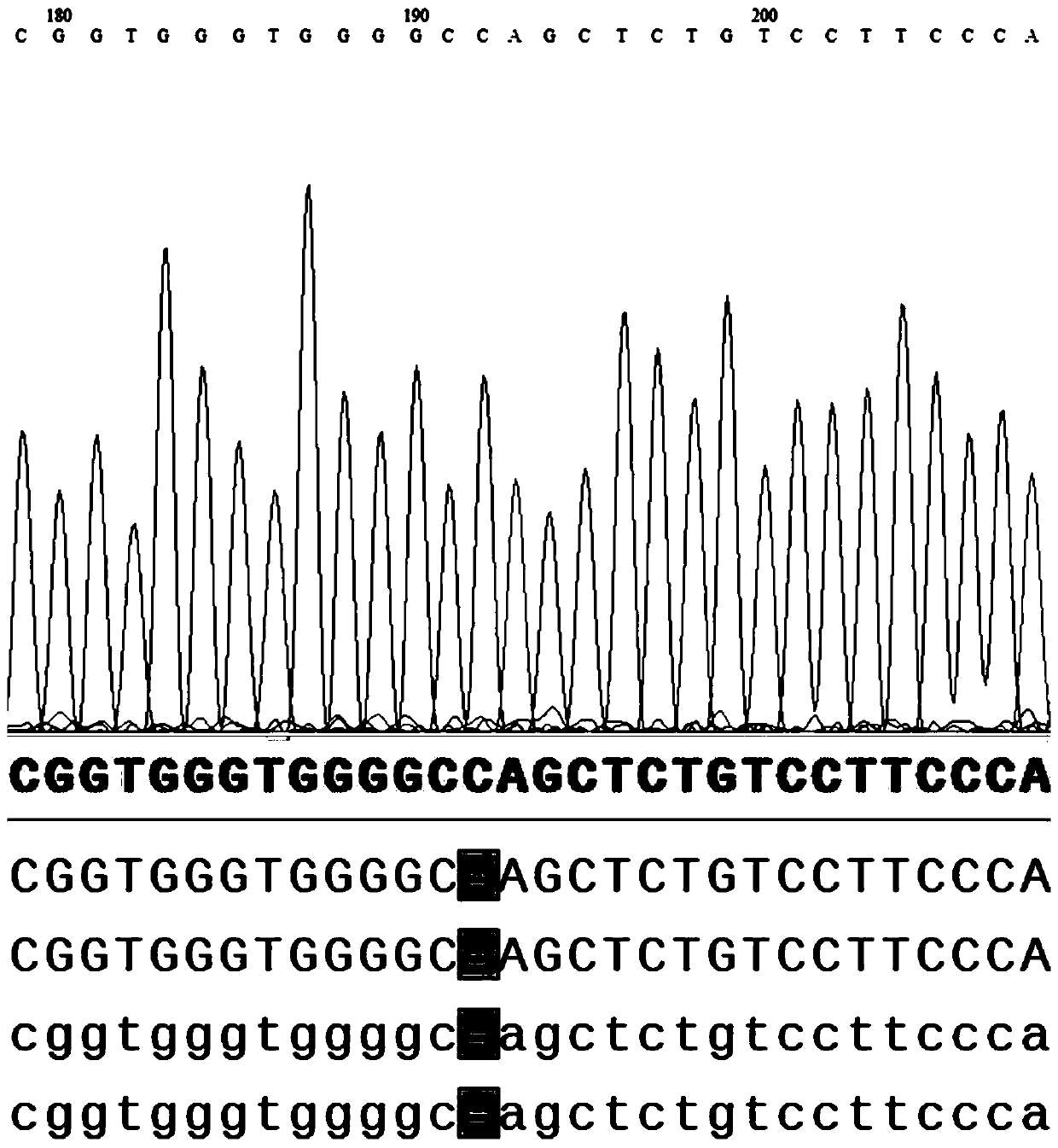PCR primer set and amplification system for amplifying exons 1-33 of human PKD1 gene
An amplification system and exon technology, applied in the field of genetic disease gene detection, can solve the problems of pseudogene interference, poor timeliness, complicated operation process, etc.
- Summary
- Abstract
- Description
- Claims
- Application Information
AI Technical Summary
Problems solved by technology
Method used
Image
Examples
Embodiment 1
[0030] Embodiment 1 (this embodiment is suitable for amplifying PKD1 gene exon 2-5a, exon 5b-6, exon 7-8, exon 11, exon 13-15a, exon 15b , exon 15c, exon 15d-16, exon 17-20, exon 21, exon 22, exon 23-24, exon 25-26, exon 27-30 , exons 31-33)
[0031] 1. The samples and reagents that need to be prepared are:
[0032] Genomic DNA (gDNA) extracted from the sample to be tested, with A260-280 between 1.8-2.0, diluted to 10ng / μL with nuclease freewater; primers with the base sequence shown in SEQ ID NO:1-36, with nuclease free water Dilute to 10 μmmol / L; RNase enzyme diluted to 5mU / μL; 5U / μL TaKaRa LA Taq DNA polymerase; 2.5mmol / LdNTP mixture; TaKaRa 2×GC Buffer Ⅰ.
[0033] 2. Use the gDNA of the sample to be tested as a template to amplify exons 1-33 of the PKD1 gene. Prepare a PCR reaction system in a sterilized PCR tube according to the following system.
[0034] The 20μL PCR reaction system is as follows:
[0035] PCR components Added volume (μL) gDNA (10ng...
Embodiment 2
[0044] Example 2 (this example is suitable for amplifying PKD1 gene exon 1, exon 9-10, and exon 12) 1. The samples and reagents to be prepared are:
[0045] Genomic DNA (gDNA) extracted from the sample to be tested, with A260-280 between 1.8-2.0, diluted to 10ng / μL with nuclease freewater; primers with the base sequence shown in SEQ ID NO:1-36, with nuclease free water Dilute to 10μmmol / L; Dilute RNase to 5mU / μL; 5U / μL TaKaRa LA Taq DNA polymerase; 2.5mmol / LdNTP mixture; TaKaRa 2×GC Buffer Ⅱ.
[0046] 2. Use the gDNA of the sample to be tested as a template to amplify exons 1-33 of the PKD1 gene. Prepare a PCR reaction system in a sterilized PCR tube according to the following system.
[0047] The 20μL PCR reaction system is as follows:
[0048] PCR components Added volume (μL) gDNA (10ng / μL) 1 2×GC BufferⅡ 10 2.5mmol / L dNTP mix 3.2 Forward primer (10μmmol / L) 0.4 Reverse primer (10μmmol / L) 0.4 RNase (5mU / μL) 2 TaKaRa LA Ta...
Embodiment 3
[0053] Example 3 (This example uses nested PCR and the amplification system of the present invention to verify the NGS data respectively)
[0054] 1. This example involves a family with polycystic kidney disease, including the proband, the younger brother of the proband, the father of the proband and the mother of the proband, a total of four members. Among them, the clinical symptoms of the proband were polycystic kidney disease with ejaculatory duct cyst and azoospermia; the clinical symptoms of the proband’s younger brother were polycystic kidney disease, the sperm motility and density were normal, and the sperm deformity rate was 99%; the father had polycystic kidney disease, and the mother The phenotype was normal. Through the bioinformatics analysis of the second-generation high-throughput data of the whole exon of the four samples of the family and one control sample and the genetic counseling analysis according to the "ACMG Genetic Variation Classification Standards an...
PUM
 Login to View More
Login to View More Abstract
Description
Claims
Application Information
 Login to View More
Login to View More - R&D
- Intellectual Property
- Life Sciences
- Materials
- Tech Scout
- Unparalleled Data Quality
- Higher Quality Content
- 60% Fewer Hallucinations
Browse by: Latest US Patents, China's latest patents, Technical Efficacy Thesaurus, Application Domain, Technology Topic, Popular Technical Reports.
© 2025 PatSnap. All rights reserved.Legal|Privacy policy|Modern Slavery Act Transparency Statement|Sitemap|About US| Contact US: help@patsnap.com



